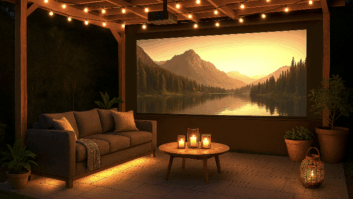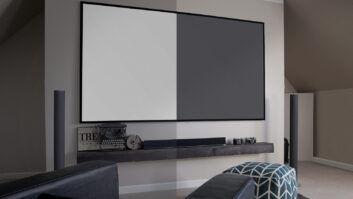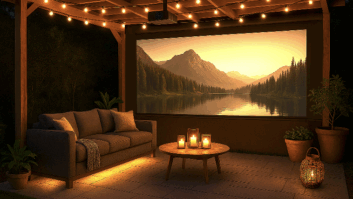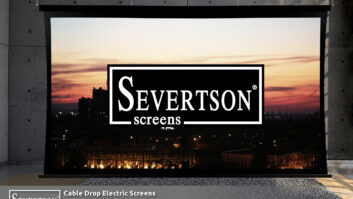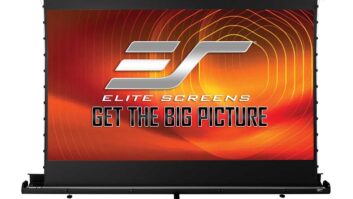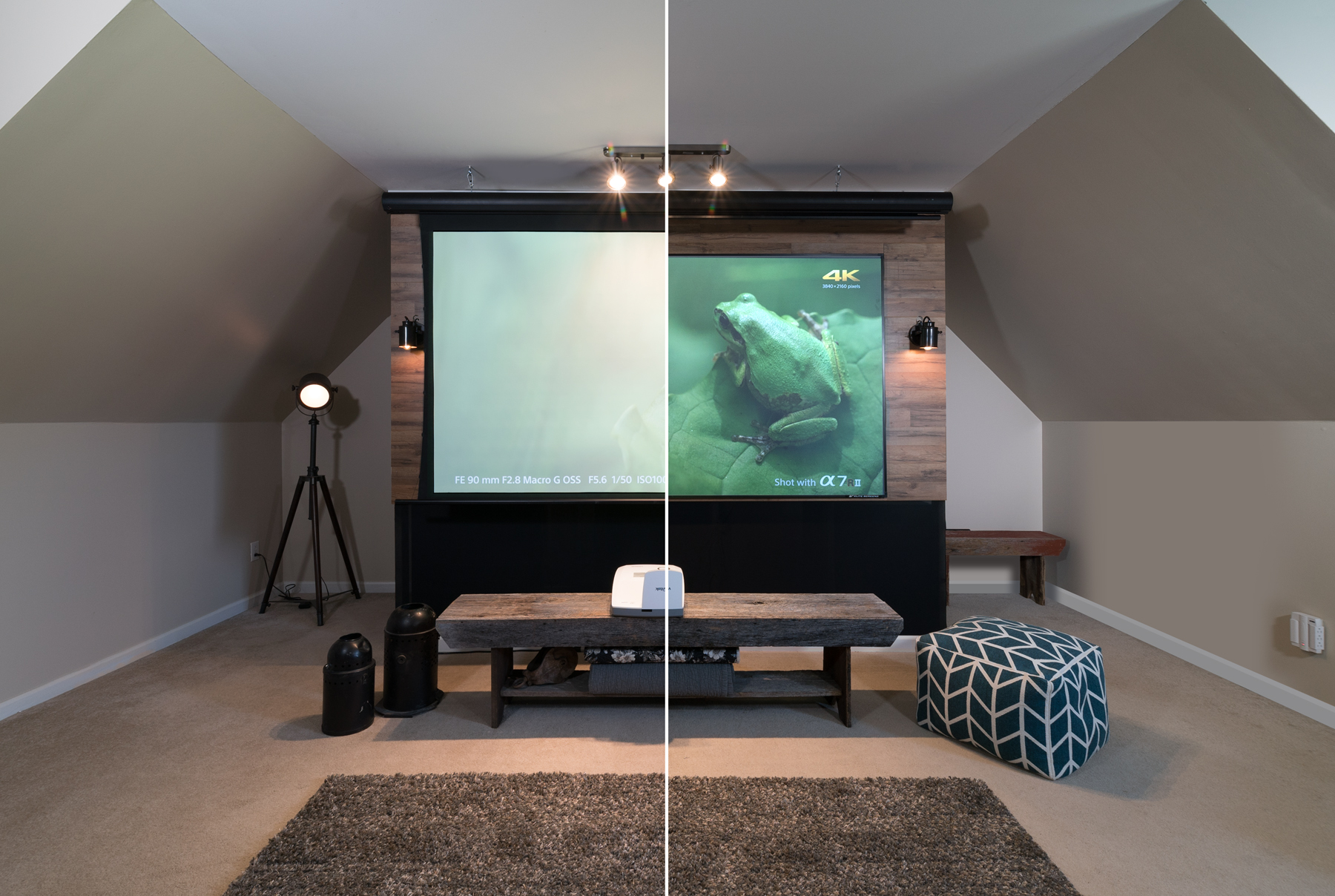
Elite Screens is using its 15th anniversary to puts its stamp on 2019.
The manufacturer of projection screens, established in 2004 by a series of A/V veterans, now encompasses 19 facilities in nine different countries. Founding members include Dave Rodgers of BenQ, Western Digital and Verizon; Jeff Chen of BenQ; Barry Coles of Epson; Jeff Kilda of EPV Screens and Dwin Electronics; and Molly Draper and Doni Myers, both of whom held positions with multiple A/V companies.
“We saw from working in projectors that the trend was going to be about higher quality and lower price,” said Rodgers, Elite’s marketing manager. It is, certainly, a trend that plays out continuously in the consumer tech industry.
“A really cool Mickey Mouse product comes out, and it sells for a fortune,” he said. “Once everyone starts getting down to competing against one another, they come up with amazing product innovation at a low price point that everyone can afford. And that’s exactly what happened with projectors.”
Added Rodgers, almost ruefully: “Your typical projector that you would buy for $1,500 today would have cost as much as a new car 15 years ago.”
See also: Movie Night! Elite’s DIY Outdoor Screen Is 8K-Ready
In addition to having a prominent presence in the custom-installation commercial and residential channels, Elite sells through such retailers as B&H Photo, Amazon, Adorama, World Wide Stereo, Staples and Crutchfield. It intends to cater to all of its dealer networks in celebration of its anniversary; while retail-specific promotions were still being finalized at press time, Rodgers said more details will become available soon.
The company, a recent TWICE Picks Award winner, has also been devoting resources toward thought leadership and consumer education content, including selling advice for retailers — a particularly crucial asset in the current buying journey for projectors.
”When customers come to you with a question, [we’re showing] how to answer it quickly and easily and not drown them with a bunch of industry double-talk,” said Rodgers. “When people come to buy a screen, they’re usually buying it after they’ve already purchased the projector. They’ve probably visited a few different websites and now they’re twice as confused.”
Rather than pushing upselling, he said, Elite advocates selling the consumer the screen they actually require rather than the highest-price model, preferring to pursue the additional business driven by word-of-mouth recommendation.
“If I’m going to lose a sale of a higher-dollar product to give them what they precisely need for their media room, I’d rather focus on the return business than send someone away not as happy as they could have been, knowing they’ll never come back.”
Elite is also bringing this industry education directly to the consumers themselves via the company’s own dedicated blog. “Interestingly enough, we’ve been gaining a lot of website traffic through it. It’s more user friendly and caters to people who don’t want a BS answer to the question of ‘Do I need a 150-inch screen in my house?’” (The correct answer to that question, of course, is “Well, how big is your room?”)
While flat, curved and now even flexible displays typically garner most of the headlines in the consumer tech press, the future for projection screen remains (forgive the pun) bright — aided in no small part by the rise of ultra-short-throw projectors. These projectors, with their small form factors, can be placed extremely close to a wall and offer more flexibility in home-theater design.
“It’s no surprise people like big-screen projection systems,” said Rodgers, “but they hate walking in between the beam and the screen. An ultra-short-throw projector negates all that. It’s literally sitting on a tabletop or pedestal in front of the wall, and the screen’s not in the way. It’s not impeding traffic — everyone can sit and enjoy a crystal-clear image.”
Speaking of trends in home theater, we couldn’t resist asking Rodgers to weigh in on the topic du jour: namely, is it too soon to begin mentioning 8K? For the record, Rodgers fell firmly on the side of not at all.
“4K is rapidly replacing 1080p even with the most modest spenders,” he said. “4K is here, which means the time to stop procrastinating on 8K is nigh.”
The good news for dealers and consumers alike, he noted, is that a projection screen that’s 4K compliant is more than likely able to handle 8K. And Elite is so confident in this assertion that it’s officially declaring such products as its currently available DIY Pro Dual screen to be 8K compliant — a pledge the company is undertaking in order to hold itself accountable, Rodgers said.




